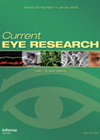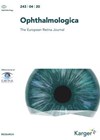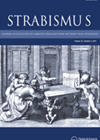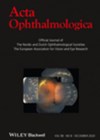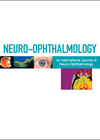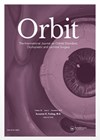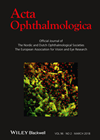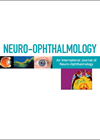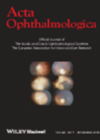
Journal Reviews
Detecting glaucoma with only OCT
In this review article, the authors describe a probability model based upon only OCT to detect glaucoma. They explain how normal anatomical variation can lead to false positives and applying a model to account for this improves specificity. The application...
Occult central retinal artery occlusion
Central retinal artery occlusion (CRAO) is a sight-threatening condition resulting from occlusion of the central retinal artery and hypoperfusion of the inner retina. Early on, fundal examination may be normal. The authors present a retrospective case series of 11 patients...
Sickle cell maculopathy
This paper reports the result of a prospective study to analyse the prevalence of sickle cell maculopathy (SCM) and its associations with age, sex, genotype, proliferative sickle cell retinopathy (PSR) stage, and the impact on visual acuity (VA). This study...
Imaging findings for macular dysplasia in nystagmus
This paper reports the retrospective analysis of congenital macular dysplasia in patients with albinism, macular heterotopias, congenital aniridia, foveal hypoplasia, congenital macular coloboma and congenital retinoschisis. The study included 29 eyes of 17 patients. The authors report SD-OCT aids diagnosis...
Transient macular thinning with Densiron 68
Densiron 68 is a heavy silicone oil (HSO) used to treat rhegmatogenous retinal detachments (RRD) with inferior retinal breaks. The authors compared changes in retinal thickness during and after the use of Densiron endotamponade, and looked at any association between...
Relating metamorphopsia severity and OCT findings in advanced epiretinal membranes
The authors present the findings of a retrospective study to correlate metamorphopsia and ectopic inner foveal layers (EIFL) or ‘central bouquet’ abnormality (CBA) in patients with advanced stages of epiretinal membrane (ERM) following the new OCT‐based grading scheme as described...
Investigating the effect of signal strength on mean retinal nerve fibre layer
The aim of this study was to determine the effect of signal strength on mean retinal nerve fibre layer (RNFL) using spectralis optical coherence tomography (S-OCT). Thirty normal subjects were imaged with S-OCT using variably dense Bangerter foils to alter...
OCT-A imaging in Grave’s orbitopathy and orbital decompression
In this case series of 12 patients and 24 orbits, the authors describe the changes in the optic nerve and peripapillary blood vessel density in patients with moderate to severe Grave’s Orbitopathy (GO) undergoing orbital decompression. The patients undergoing orbital...
Glaucoma and capillary perfusion
Elevated IOP is important but not the sole factor responsible for retinal ganglion cell (RGC) death and optic nerve damage in glaucoma. There is increasing evidence that visual loss correlates with macular inner retinal thinning. A total of 148 eyes...
Beware the disc in myopic patients
Glaucoma is a chronic and progressive optic neuropathy characterised by damage of retinal ganglion cells. Evaluation of structural damage of the optic nerve is important in glaucoma diagnosis. The ISNT rule states that the neuroretinal rim width is generally widest...
OCT changes in chronic optic neuropathy
The authors evaluated optical coherence tomography (OCT) angiography in 10 patients who suffered various types of chronic optic neuropathies. Glaucoma is known to cause a decrease in peripapillary perfused capillary density on OCT angiography. However, other optic neuropathies have not...
Changes in parafoveal retinal thickness after bariatric surgery in type 2 diabetics
Bariatric surgery induces an instant normalisation of blood glucose in as many as 80% of patients with type 2 diabetes. It has been previously reported that diabetic retinopathy (DR) is stable within one year after bariatric surgery. In this study,...


